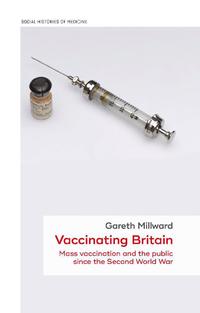' Vaccinating Britain shows how the British public played a central role in the development of vaccination policy since the Second World War. Using government sources, newspapers, internet archives and medical texts, this book explores the relationship between the public and public health through five key vaccines - diphtheria, smallpox, poliomyelitis, whooping cough and measles-mumps-rubella (MMR). It reveals a complicated picture. While the British public has embraced vaccination as a safe, effective and cost-efficient form of preventative medicine, demand for vaccination and trust in the authorities that provide it has ebbed and flowed according to historical circumstances. Moreover, the British public has never behaved as a single unit, with various groups making their presence felt and demanding changes in approach from local and national government. The book first examines the vaccines made available in the 1940s and 1950s. These show how modern attitudes towards vaccination and the bureaucracies necessary for their administration were forged. Second, controversies over the pertussis (whooping cough) vaccine and MMR showed that while parents trusted vaccination as a concept, bad publicity about individual vaccines could harm - and, indeed, were a reflection of - their confidence in medicine and the British welfare state. This volume, breaking from the tradition of single-vaccine case studies, compares these attitudes across time and vaccine, providing a unique perspective. It is a valuable resource for health researchers and students interested in the background to today's vaccination schedule as well as offering new insights for historians of public health, British policy making and the post-war state' --Back cover.
Vaccinating Britain shows how the British public played a central role in the development of vaccination policy since the Second World War. It explores the relationship between the public and public health through five key vaccines - diphtheria, smallpox, poliomyelitis, whooping cough and measles-mumps-rubella (MMR). It reveals that while the British public has embraced vaccination as a safe, effective and cost-efficient form of preventative medicine, demand for vaccination and trust in the authorities that provide it has ebbed and flowed according to historical circumstances. It is the first book to offer a long-term perspective on vaccination across different vaccine types. This history provides context for students and researchers interested in present-day controversies surrounding public health immunisation programmes. Historians of the post-war British welfare state will find valuable insight into changing public attitudes towards institutions of government and vice versa.
